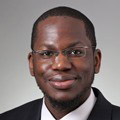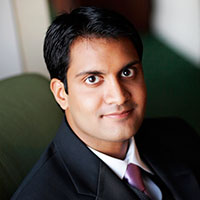Top 5 Things I Wish I Had Known: Transitioning from FIT to Early Career and Beyond
June 22, 2017 | Daniel Addison, MD, and
Nishant R. Shah, MD, MPH, MSc
Career Development
  |
Many of the decisions we make as fellows-in-training (FITs) or as Early Career physicians can have long-lasting impact on our careers, and yet we often make these decisions with limited insight or guidance. During the coming year we will present articles addressing some of the more common challenges that FITs and Early Career physicians face and how some Early Career ACC members have successfully navigated these challenges. In this article, the focus will be on how to navigate some of the specific challenges associated with the transition from FIT to early career academic faculty.
Challenges and Practical Solutions:
- Additional clinical workload.
- Understanding academic promotion.
- Time pressure to obtain independent funding.
- Choosing the ‘right’ mentorship team.
- Unexpected changes.
Clinical work as an early career academic faculty member involves much more than simply seeing patients. Credentialing by (multiple) insurance companies, insurance- and disability-related paperwork, hospital billing inquiries, and other administrative tasks all take a significant amount of time.
Practical Solution: As a FIT, get a real sense of what a work day looks like as an Early Career physician. Consider shadowing your mentor or another faculty member with a job similar to the one you want for a full day. This will give you a more comprehensive account of what will be asked of you on a daily basis.
The rules for academic promotion vary based on institution and specific track (i.e., clinician-educator vs. clinician-scientist). Publications, local committee and administrative duties, and service to national/ international professional organizations tend to be common requirements, but getting opportunities and knowing how much time to dedicate to each can be very challenging.
Practical Solution: Educate yourself about the institution’s academic promotion requirements and timeline as early as possible. Positions in professional organizations are often awarded on the basis of personal connections and a track record of collaboration, so maintain a strong personal network of mentors, colleagues and friends. When an opportunity does come up, whether it be a research collaboration, administrative position, committee membership, or anything else, accept only after you’ve thought about whether it meaningfully contributes to your next academic promotion and, more importantly, what you would give up by accepting.
Most initial academic contracts are no longer than 3 years. For those hired as clinician-scientists, the ‘honeymoon’ to obtain meaningful independent funding is no more than 1-2 years. Applying for grants in the middle of moving, orienting to a new institutional environment, credentialing, establishing a clinical practice, and all of the other stresses of a new faculty position can be very challenging.
Practical Solution: Apply for funding early (even as a FIT) and often. The ‘big’ professional organizations (i.e., ACC, AHA) are outstanding places to start looking for funding, but these grants tend to be ultra-competitive. Consider alternative portable sources of funding from charitable foundations or local/ state professional societies, who often have simpler applications, less competition, and faster turnaround times. Money, no matter how small the amount, tends to attract more money down the road.
This is the most important decision that an early career physician makes, as it impacts the quality of research/ educational output, institutional politics, national/ international society opportunities, and other important factors critical for academic progress. A great clinician or well-published researcher does not necessarily make for a great mentor.
Practical Solution: When possible, identify your mentorship team before you sign for the job. The best mentors are those who are approachable, available to you, have a personal track record of expertise and leadership in your specific area of interest, and who have a strong track record of successful mentees.
Unexpected changes related to leadership, funding, clinical coverage, and new employment opportunities routinely occur in academic medicine. These changes can occur at any time and they can significantly alter your short- and long-term plans in both your professional and personal life.
Practical Solution: Envision alternate scenarios at regular intervals. What would you do if your primary mentor or Chief left for another institution? What would you do if your grant was defunded? What would you do if you needed to clinically cover one of your colleagues for 6 months? For each of these scenarios, have a concrete ‘Plan B’ ready. In addition, continuously update your CV and NIH biosketch. You never know when you’ll need them!
This article was authored by Daniel Addison, MD, and Nishant R. Shah, MD, MPH, MSc.
